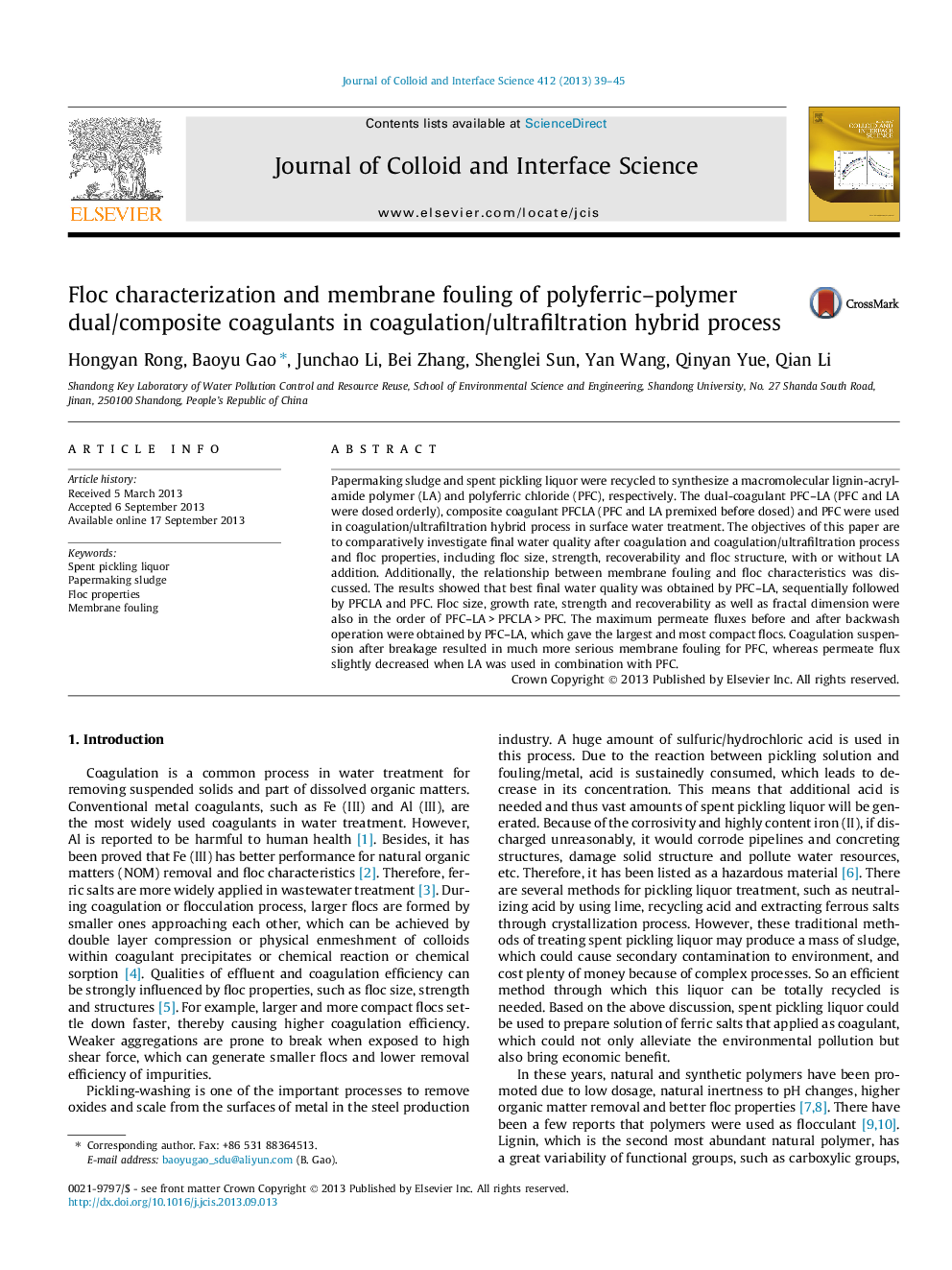| Article ID | Journal | Published Year | Pages | File Type |
|---|---|---|---|---|
| 607469 | Journal of Colloid and Interface Science | 2013 | 7 Pages |
•Papermaking sludge was recycled to synthesize a flocculant.•Polyferric chloride (PFC) was prepared using spent pickling liquor.•Dual and composite coagulants were studied in coagulation/ultrafiltration process.•Floc properties of dual and composite coagulants were comparatively investigated.•The relationship between membrane fouling and floc properties was discussed.
Papermaking sludge and spent pickling liquor were recycled to synthesize a macromolecular lignin-acrylamide polymer (LA) and polyferric chloride (PFC), respectively. The dual-coagulant PFC–LA (PFC and LA were dosed orderly), composite coagulant PFCLA (PFC and LA premixed before dosed) and PFC were used in coagulation/ultrafiltration hybrid process in surface water treatment. The objectives of this paper are to comparatively investigate final water quality after coagulation and coagulation/ultrafiltration process and floc properties, including floc size, strength, recoverability and floc structure, with or without LA addition. Additionally, the relationship between membrane fouling and floc characteristics was discussed. The results showed that best final water quality was obtained by PFC–LA, sequentially followed by PFCLA and PFC. Floc size, growth rate, strength and recoverability as well as fractal dimension were also in the order of PFC–LA > PFCLA > PFC. The maximum permeate fluxes before and after backwash operation were obtained by PFC–LA, which gave the largest and most compact flocs. Coagulation suspension after breakage resulted in much more serious membrane fouling for PFC, whereas permeate flux slightly decreased when LA was used in combination with PFC.
Graphical abstractFigure optionsDownload full-size imageDownload high-quality image (106 K)Download as PowerPoint slide
